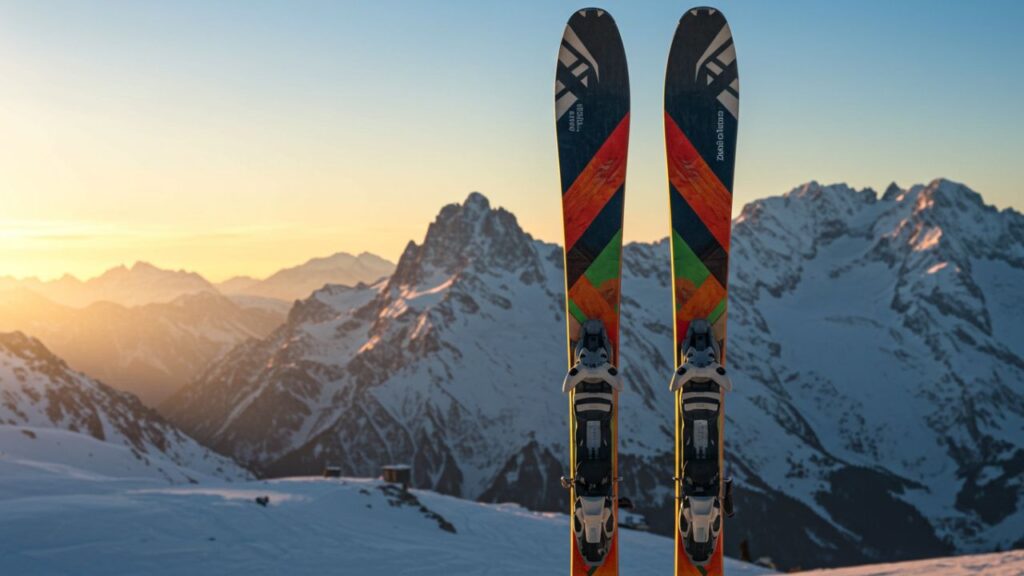For ski touring enthusiasts, the term zuschneidfelle refers to custom-cut climbing skins designed to fit the base of skis. These skins are an essential piece of equipment for uphill travel, providing traction while still allowing glide. Without zuschneidfelle, ascending snowy slopes would be nearly impossible, as skis would slide backward with every step.
Modern zuschneidfelle are designed to balance grip and glide, making ski touring more efficient and enjoyable. As skiing technology advances, these skins have evolved with better adhesives, lightweight materials, and customizable fits to match different ski profiles.
What Are Zuschneidfelle?
Zuschneidfelle literally means “cut skins” in German. They are strips of specialized fabric, typically made from mohair, nylon, or a blend of both, that attach to the underside of skis. The fibers are aligned in one direction: when skis slide forward, they glide smoothly; when skis move backward, the fibers grip the snow to prevent slipping.
The “cutting” part refers to trimming the skins to match the exact shape and length of the skis. Pre-cut skins exist, but most skiers prefer zuschneidfelle for a precise fit that maximizes surface coverage and performance.
The Role of Zuschneidfelle in Ski Touring
In ski touring, zuschneidfelle are indispensable. Their main functions include:
-
Traction on Ascents: They provide the grip needed to climb uphill efficiently.
-
Efficient Glide: Designed to minimize drag, they allow smooth forward movement.
-
Safety: Reliable skins reduce the risk of slipping on steep or icy terrain.
-
Custom Fit: Properly cut skins ensure that no base edges are exposed, improving stability.
By offering a balance of friction and glide, zuschneidfelle allow skiers to conserve energy while navigating challenging alpine terrain.
Types of Zuschneidfelle
Not all zuschneidfelle are the same. Materials and designs vary depending on skiing needs:
Mohair Skins
Made from natural fibers, mohair skins provide excellent glide. They are lightweight and efficient but less durable on abrasive snow. Ideal for competitive ski touring.
Nylon Skins
Synthetic nylon skins are highly durable and offer better grip. However, they are heavier and provide less glide compared to mohair. Perfect for beginners or rugged conditions.
Mohair-Nylon Blends
Blended skins combine the glide of mohair with the durability of nylon, making them a popular choice among all-round ski tourers.
Pre-Cut vs. Zuschneidfelle
While some manufacturers sell skins pre-cut for specific ski models, zuschneidfelle allow skiers to customize their fit, which ensures maximum edge coverage and reliability.
How to Cut Zuschneidfelle
Cutting zuschneidfelle requires precision. The steps include:
-
Align the Skin: Place the skin adhesive side down on the ski.
-
Mark the Length: Ensure it stops just short of the ski tail clip.
-
Trim the Width: Use a skin-cutting tool to trim along the ski edges, leaving a few millimeters exposed for edge grip.
-
Adjust the Tip and Tail: Attach tip loops and tail clips securely for stability.
-
Final Check: Ensure the skin lies flat without wrinkles or gaps.
Most skins come with trimming tools, making the process easier for first-timers.
Advantages of Using Zuschneidfelle
Skiers who rely on zuschneidfelle experience several benefits:
-
Custom Performance: Tailored fit enhances both climbing grip and downhill performance.
-
Durability: Quality materials withstand varying snow and ice conditions.
-
Energy Efficiency: Balanced glide reduces fatigue during long ascents.
-
Adaptability: Zuschneidfelle work in deep powder, icy slopes, and mixed conditions.
-
Longevity: Properly maintained skins can last multiple seasons.
Challenges and Common Issues
Like any equipment, zuschneidfelle come with challenges:
-
Adhesive Wear: Over time, glue may lose its stickiness.
-
Snow Buildup: Moisture can cause skins to ice up, reducing grip.
-
Improper Cutting: Incorrect trimming can expose ski bases or edges, reducing performance.
-
Weight: Heavier skins can slow down touring efficiency.
Solutions include proper storage, re-gluing kits, and using skin wax to minimize snow buildup.
Caring for Zuschneidfelle
Maintenance plays a crucial role in extending the life of zuschneidfelle:
-
Dry After Use: Always air-dry skins after skiing to prevent mold and adhesive damage.
-
Avoid Contamination: Keep the adhesive clean by using protective sheets during storage.
-
Reapply Glue: Use re-glue kits when skins lose their stickiness.
-
Wax Application: Apply skin wax to reduce icing and improve glide.
-
Proper Storage: Store in a cool, dry place away from direct sunlight.
Zuschneidfelle in Modern Ski Touring
Recent innovations in zuschneidfelle have made them more efficient than ever. Modern features include:
-
Hybrid Adhesives: Combining hot-melt glue with silicone for stronger yet removable bonding.
-
Lightweight Materials: Skins designed for racing weigh less without sacrificing durability.
-
Adjustable Tail Clips: Allow better compatibility with different ski lengths.
-
Eco-Friendly Options: Brands are introducing sustainable materials to reduce environmental impact.
These innovations reflect how ski touring has grown in popularity and sophistication, pushing equipment design forward.
Choosing the Right Zuschneidfelle
When selecting zuschneidfelle, skiers should consider:
-
Ski Dimensions: Ensure skins cover most of the base but leave edges exposed.
-
Snow Conditions: Mohair for dry, cold snow; nylon for wet, abrasive conditions.
-
Touring Goals: Lightweight skins for racing; durable skins for long expeditions.
-
Ease of Use: Check for user-friendly cutting tools and attachment systems.
By matching skins to terrain and skiing style, skiers maximize both safety and enjoyment.
The Future of Zuschneidfelle
As ski touring grows, zuschneidfelle are becoming more specialized. Trends include:
-
Smart Skins: Potential for temperature-reactive materials to adapt grip and glide.
-
Sustainable Fabrics: Increased use of recycled fibers and biodegradable adhesives.
-
Customization Services: Shops offering professional skin cutting for perfect fits.
-
Integration with Ski Tech: Skins designed to work seamlessly with new lightweight skis and touring bindings.
The future promises skins that are lighter, greener, and more efficient, ensuring they remain essential in alpine adventures.
Conclusion
Zuschneidfelle are a cornerstone of modern ski touring. By providing traction for uphill travel and maintaining glide for efficiency, they enable skiers to explore challenging alpine terrain with confidence. From traditional mohair designs to high-tech blends with hybrid adhesives, these custom-cut skins reflect the evolution of skiing technology.
As innovations continue, zuschneidfelle will only become more reliable, sustainable, and performance-driven. For both seasoned ski mountaineers and beginners, they remain an indispensable tool for safe and enjoyable adventures in the mountains.





